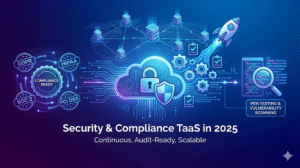Keys to Maximize ROI by Optimizing ERP Performance
ERP is a very important aspect of any modern. ERP stands for Enterprise Resource Planning. ERP systems allow businesses to achieve a certain level of automation so that they can maintain business operations, finances, and human resource. It is an outstanding platform where you can synchronize your backend workflow for maximum efficiency and cost-effectiveness.
ERP systems are important and implementing them right is critical. If you are not choosing the right kind of system and the right vendor for your business, you might as well throw your money in a river. There are numerous incidents and reports of failed ERP implementations that led to poor returns on investments for many companies. So, in this article, we will guide you through the basics of ERP implementation and how you can optimize the system to ensure maximum ROI (Return on Investment).
Choose the Right System
The first step of any successful business solution implementation is to choose the right kinds of solutions. When it comes to ERP solutions, you do not need the best solution available, you need the best solution for your business. A lot of business owners waste a lot of money on ERP solutions just because they did not spend the time to choose the right solution. You need to evaluate your KPIs, backend workflow and come up with a solution that is tested to be successful. The purpose of an ERP system is to boost your productivity so it needs to be aligned with your business goals.
Choose the Right People
You can spend hundreds of thousands of dollars on ERP systems and not see any improvement on your ROI. No matter how technologically advanced your ERP system is, it all comes down to how you handle it. If you are not willing to invest in proper workforce to handle your ERP, you will not benefit from even a state of the art ERP system.
Future Proofing
It is always wise to keep in mind that you are aiming for a long term ERP solution. It is very normal if you are in a tight budget. The point is to keep room for future proofing whatever your budget is. As you are implementing a complete business solution, there is a big possibility that you will improvise as you go and this might result in cost overrun. Also, your business will grow over time. As your business grows bigger, you will need more resources from your ERP system. This is exactly why you need to keep room for future proofing. Aim for a higher end system than you might initially need. This might seem like an overkill for the time being but it will pay off eventually in the near future.
Choose the Right Vendor
There are a lot of business solution vendors that will offer you attractive deals and promise to boost your ROI by XX%, but this is not rocket science. If boosting business ROI was so easy, every business would be booming around the world. As a business owner, it is your duty to check the credibility of any vendor. Go through the customer reviews, benchmark against other vendors. Look out for customer support. It is always encouraged to check for second opinions. Ask for estimates from various vendors. Give the green light only after you are certain that the given vendor is the right one for you and they will stick by you for as long as you need them.
Cloud-based ERP
We live an era of the Internet. Everything is available on the internet. Every wise businessman has moved their business to online. ERP vendors are no different. Biggest names in the ERP industry such as Oracle, SAP, and Microsoft have already moved to cloud-based solutions. Cloud-based systems not only save you a lot of storage space but they also save a lot of time in synchronizing all the devices. The main benefit of cloud-based systems is the highly centralized data flow so you don’t have to update each device manually.
Backend Workflow
Understanding the backend workflow is another critical aspect of ERP implementations. ERP will focus on your finances, supply chain, inventory, human resource and so on. You need to understand how your employees perform so you know for sure which systems to integrate and how it will benefit you.
Training
It is essential that you train your employees who are supposed to use the ERP system on a day to day basis. IT department, supply chain department and HR department are the most likely to be impacted by the ERP implementation. So, arrange a training session for them so they can understand how the system works and how they can benefit from the system to boost their productivity.
Be Prepared
Before implementing the new ERP system you are going for, it is safe to assume that you are using some kind of premise-based system to maintain your business needs. To make most of the system, be prepared for the migration. Migrating data from one system to another can be a terrifying task. So, the earlier you are ready, the better it is for your ROI. Complete, accurate and consistent data is key to any successful business software implementation.
Limited Customization
A certain amount of customization is necessary to align any business solution with your specific business. However, you need to make sure that you don’t overdo the customization. You need to limit the customizing abilities to an extent so that the system doesn’t become obsolete. The less customization you do, the easier it is to maintain and upgrade the system in the future.
Who Are We?
Syncoria is a Canada based business transformation expert and Odoo partner that has been providing digital business solutions to Small and Medium businesses in North America for over 14 years. We streamline and integrate your ERP, websites, sales, operations, CRM, POS, inventory, and everything else using Odoo. Because it’s extremely flexible, you can configure your Odoo package to meet your precise needs. Visit us at www.syncoria.com to schedule a consultation any time you like.
LIKE THIS POST SHARE IT WITH YOUR FRIENDS
RECENT POSTS
Guides

How To Select a Regression Testing Automation Tool For Web Applications
Regression testing is an essential component in a web application development cycle. However, it’s often a time-consuming and tedious task in the QA process.

Switching from Manual to Automated QA Testing
Do you or your team currently test manually and trying to break into test automation? In this article, we outline how can small QA teams make transition from manual to codeless testing to full fledged automated testing.

Why you can’t ignore test planning in agile?
An agile development process seems too dynamic to have a test plan. Most organisations with agile, specially startups, don’t take the documented approach for testing. So, are they losing on something?

Challenges of testing Single Page Applications with Selenium
Single-page web applications are popular for their ability to improve the user experience. Except, test automation for Single-page apps can be difficult and time-consuming. We’ll discuss how you can have a steady quality control without burning time and effort.

Why is Codeless Test Automation better than Conventional Test Automation?
Testing is important for quality user experience. Being an integral part of Software Development Life Cycle (SDLC), it is necessary that testing has speed, efficiency and flexibility. But in agile development methodology, testing could be mechanical, routine and time-consuming.






